An Overview of Quilts in America
Quilting is defined as the “stitching together of layers of padding and fabric” and was primarily a functional and practical craft for protection and warmth. The term ‘quilt’ comes from the Latin word culcita, meaning bolster or cushion. The earliest known quilted garment is depicted on a carved ivory figure of an unknown Pharaoh from the Egyptian First Dynasty as early as 3400 BC. Quilted armor, also known as “Gambeson“, was worn by itself or under metal armor for protection for centuries. This type of armor have been found as early as the 10th century BC and highly skilled quilters were required to make sure the armor was strong enough for battle.
Various quilters throughout history formed their own unique quilting style and patterns. These quilts were passed down as an heirloom from generation to generation and usually told stories of the family using certain visual cues, words, and images. There are four main types of quilting: pieced, appliqued, paper pieced, and English Paper Pieced. The type of pattern, stitch, and fabric used is very important depending on the functionality, purpose, and even story of the quilt itself.

Whole-cloth quilt, 18th century, Netherlands. Textile made in India.
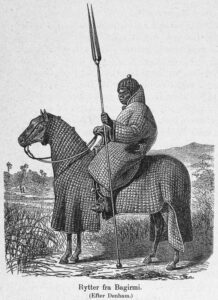
ancient Gambeson https://en.wikipedia.org/wiki/Gambeson
Quilting in America has a rich history and dates back to the very first colonialists that settled here. English women brought with them their traditions of quilting and passed them on to their own families and other cultures in America. With the end of slavery in 1865, the African-American community developed their own distinctive style of quilting. The nationwide recognition of African-American quilt-making came in 2002 when the Gee’s Bend quilting community in Alabama was celebrated in an nationwide traveling exhibition. This community of African-Americans have a quilt-making tradition that goes back several generations. Their designs are characterized by pattern improvisation, multiple patterns, bright, contrasting colors, and freedom of expression.
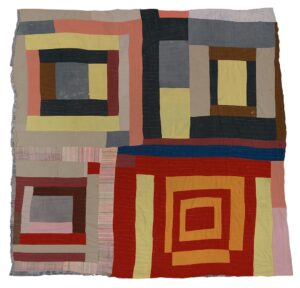
Mary L. Bennett, “Housetop”—four block variation, c. 1965
Indigenous American Tribes learned the art of quilting through colonial settlers and missionaries. Native American women developed their own unique style, for example the Lone Star design and a variation on Morning Star designs. These style of Star quilts have become an important staple of Native Plains Tribes and are quite common in many western style designs seen today. The Seminole tribes in the Florida Everglades created their own unique design called Seminole Piecing that emerged from a lack of material and pieced together smaller pieces of cloth to form larger ones.
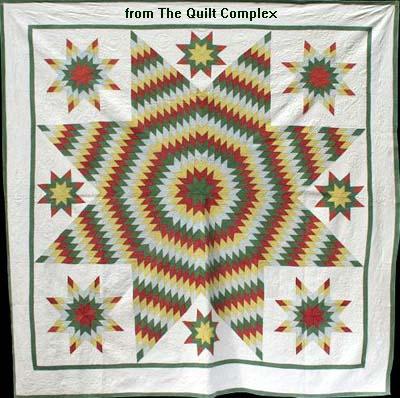
http://www.womenfolk.com/quilt_pattern_history/ mornstar.htm
The Amish community in the Northeastern United States have also formed their unique style of quilting. The quilters in Lancaster, Pennsylvania are known for their Diamond-in-a-Square and Bars patterns and other communities use patterns such as Brick, Streak of Lightning, Chinese Coins, and Log Cabins. The Appalachian region of the United States that stretches from Georgia all the way to Canada also have their own distinct style of quilt making. The patterns are influenced by Scotch-Irish and German folk traditions as well as Indigenous Tribes and the Amish community. Appalachian quilting patterns are traditionally geometric and represents family or current events.
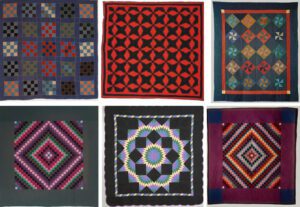
https://patternobserver.com/2012/05/17/the-history-of-the-american-quilt-amish-quilts/
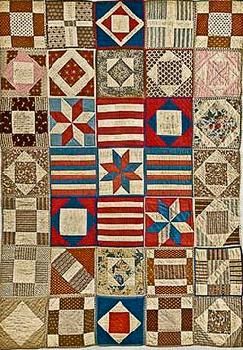
https://csdt.org/culture/quilting/appalachian.html
Historically, quilts have been used as a functional item, but with the 2002 Gee’s Bend Quilt Exhibition and the work of many contemporary quilters, quilting emerged from the craft realm and was finally recognized for its aesthetic beauty and skill in the fine art world. Quilts today are used for warmth on a cold night or as a wall hanging just like a fine painting. Here are some great articles below about how quilting has taken the art world by storm!
How Quiltmaking’s Deep Traditions are Influencing Contemporary Art
Fashion’s Obsession With Quilting is Breathing Life Into A Classic American Craft
Why the Art World is Embracing Craft
Contemporary Quilting
Our gallery features some wonderful quilters and they have been gracious enough to share their process, why they chose quilting, and their view on quilting today and how it’s changed over the years! Read on about each artist we have featured! Each artist featured have work available for purchase in store and online at shop.piedmontcraftsmen.org
Ann Harwell
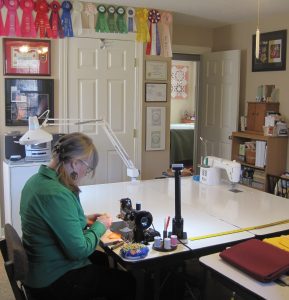

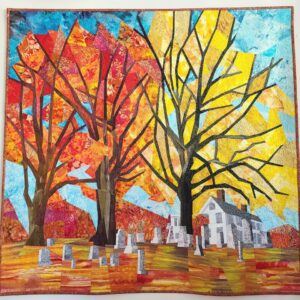
At age 5, Santa brought me a Singer sewing machine. I have been sewing since then, working as a tailor/seamstress in clothing stores, bridal shops or making clothes in my home. My first quilt was a baby quilt for our first child. My passion for quilting grew from a hobby to a profession and to an art. I start with a rough drawing, draft a straight line design and then transfer the design to pattern paper. Fabric is “auditioned”, precision cut and sewn together with a 1945 Singer sewing machine. Since childhood, I have been collecting fabric. My quilts are constructed like fine garments with great attention to detail; strong, straight seams and sharp, precise corners. After the pieced top is constructed, I layer it with cotton batting and a whole cloth backing that I select to co-ordinate with the front. I then stitch a design through all the layers with a straight stitch machine, often stitching relevant quotes.
There is a popular quote stating “These aren’t your grandmother’s quilts.” The availability of computer guided machines, the ability to create fabric through an online service, painting and gluing have all made quilting easier at the expense of its artistry. Is it fine art or craft is an ongoing question for all media that has been historically designated as craft. It seems as though art and craft have turned away from fine craftsmanship. I’m not willing to give it up in order to do the easy thing.
Each of Ann Harwell’s quilts is an original template design consisting of a diverse array of cotton fabrics, precision cut, intricately pieced and exorbitantly quilted. Her hallmarks are originality, craftsmanship, and use of the finest quality materials.
Read more about Ann on her website at quiltartisannharwell.com/about-ann
Jane Frenke
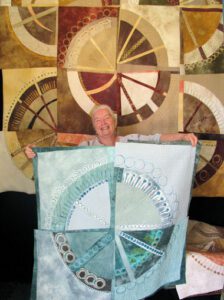
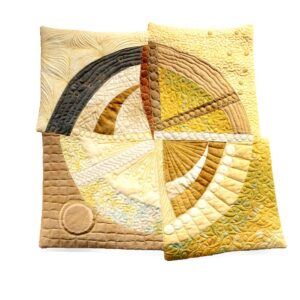
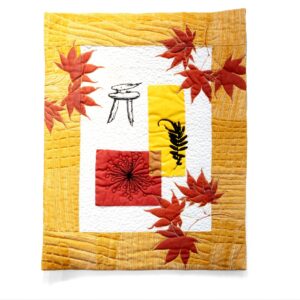
Fiber and fabric have been a part of my life forever. My mother taught me to push the needle back through the quilt when I was four or five years old and “we” were finishing her Grandmother’s Garden quilt on an old curtain frame. I took a breather and went to college majoring in graphic art and getting masters credits in printmaking. I started the Loom Room, a hand weaving studio, in 1974 and wove clothing, and interior design pillows and wall hangings for the next twenty-eight years. These products were retailed and wholesaled throughout the county.
Quilting started with these wonderful scraps that I was unable to throw away. As any fiber person knows, scrap multiplies arithmetically in proportion to the business of the artist. I had to do something with these beautiful dyed silks and gorgeous cotton hand-wovens. Art quilts, with the twist of practicality, are the focus of my creative flow.
In recent years these quilts have won best in show in West Virginia, Ohio, and Maryland, numerous Judge’s choice awards and are in the possession of many collectors around the country and hanging in the American Embassy, Saudi Arabia. I hand-dyed and print the fabric and also used commercial fabrics to obtain the look I’m seeing in my mind. “If you could be inside my head and see what I see…” a student once wrote, I totally agree!
Read more about Jene Frenke at www.fiestafibers.com
Julia E. Pfaff
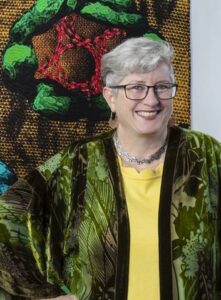
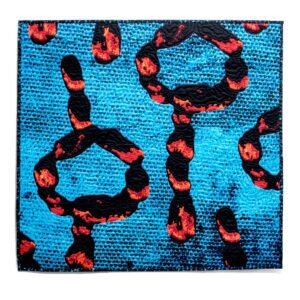
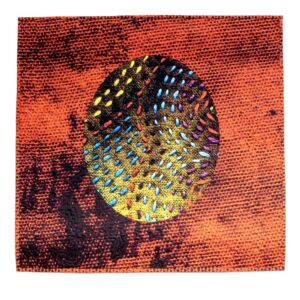
I make art employing the most vernacular of all media – stitched fabric. In the late 70’s I was inspired by the work of conceptual artist Joseph Kosuth to present quilts as art within a gallery context. Moving beyond the conceptualists’ appropriation of found domestic objects I have chosen to maintain the integrity of my art object – a quilt – and lavish upon it layers of process. My Contour series uses dye inkjet printed fabrics which originate with my own hand embroidered hand dye painted fabric. The digital image is manipulated and enlarged prior to printing. Prior to quilting the fabrics may be further altered with pigment and/or hand embroidery. My Contrast series references my digitally enlarged views of embroidered stitches. In this work I show drips and contours outlined by yellow painted “stitches”. Each yellow “stitch” is surrounded by intensely colored hand embroidery. Stitching surrounds stitches, and then machine quilting is added in decorative designs and those suggesting the contour lines from topographical maps. In both series the finished object has the structure of a quilt, but the images are informed by folk, fine art, ethnic and graphic design traditions. My goal is the creation of a contemplative object, both beautiful and evocative, both well-crafted and spontaneous in design.
Read more about Julia E. Pfaff atjuliapfaffquilt.blogspot.com
Margaret Agner

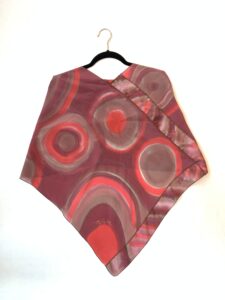
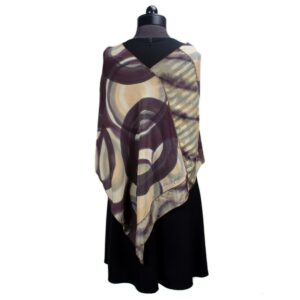
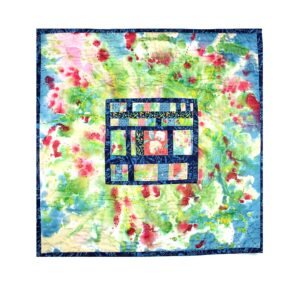
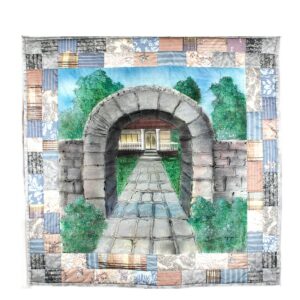
Margaret Agner does a complex form of silk painting she developed in 1996. She is known for her exquisite quilts and silk painting alike. The textures she creates are close to nature yet form an abstracted version of whatever species she is portraying. Her initial loose underpainting dictates and inspires the rest of the composition and layers. The subsequent layers of dying, steaming, painting, resist drawings and outline painting can take over a week between curing and drying. Most of her images are floral, but she is also working on a series of butterflies and moths. She makes art, like Mondrian, from “inner necessity.”
See her video explaining her process here! The Silk Road The Art of Margaret Agner
Susan Webb Lee
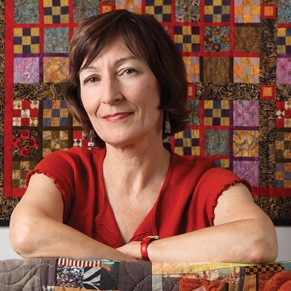
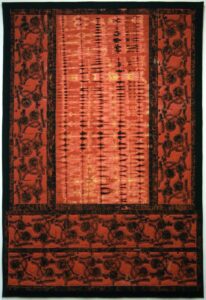
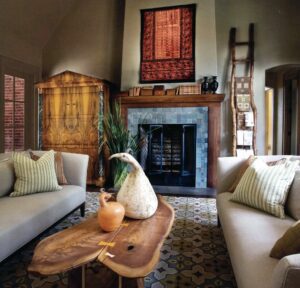
Quilts are not just for the bed! Imagine your walls with unique fabric art that sets a mood, enhances your decor, and lifts your spirit. My designs are abstract and free-form in nature, and are put together much like fabric puzzles. I work intuitively as I go, without relying on patterns, sketches or drawings. This allows each quilt to develop somewhat spontaneously, and I have the freedom to alter the composition at will. Color has always been my primary motivation for making art,” says Susan Webb Lee, who has been making her one-of-a-kind quilts since 1979. “I enjoy creating patterns with color and shape, and look for the interesting relationships that colors have with each other and how they can change in subtle or dramatic ways.” Lee frequently uses traditional quilt block designs as her starting point for freehand piecing, which allows her to be less restrained, and more intuitive and spontaneous. She enjoys the surprises that result from working without a definite plan. She received her BFA from Mississippi University for Women, her MA in education from Delta State University, attended the Penland School of Crafts, and studied at the Arrowmont School of Arts and Crafts. Her work has been shown in more than forty exhibitions across the country including all the southeastern states.
I made by first quilt in graduate school, in a surface design class, with an inspiring instructor who was passional about art and design. The quilt was made of on width of cotton fabric, painted with Procion dyes, and quilted by hand. I didn’t start piecing fabric until several years later, and began machine quilting around that time. I’ve always been attracted to fabric, and consider it to be a very versatile medium. Currently, my work usually includes hand-dyed fabrics, hand-printed cottons, and a variety of stitching techniques. I enjoy the batik process, discharge dyeing, printing fabric with acrylics using Gelli plates, and stretching my imagination to embrace new ways of manipulating cloth.
Read more about Susan Webb Lee at www.artquiltstudio.com
Addison Paige
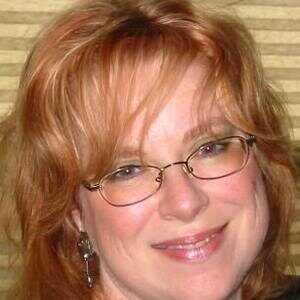
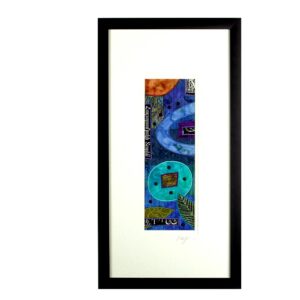
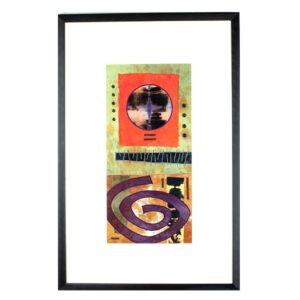
What can I say that won’t sound like every other artist statement? I do think all artists are drawn to making art from basically the same deep need to create something visual to express who we are and what we have a need to say. I make art because it is who I am as well as what I do. I can’t imagine doing anything else with my life. Art colors the way I view the world around me, and the world affects the way I make art. My work is full of my past influences, personal history, and emotional interactions. I am a visual person; I find beauty in most things I look at from the brilliant blue sky mixed with luscious white and grey clouds to the patterns of cracks found in a cement walk way. I feel that design is a powerful force that runs through me. Are there such beings as Jedi Artists that control the Force? That is how I feel when I am creating artwork, like I am harnessing a greater Force and bringing it into the visual world.
Read more about Addison Paige at www.addisonpaigeart.com
Pattiy Torno
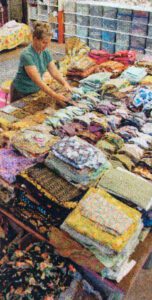
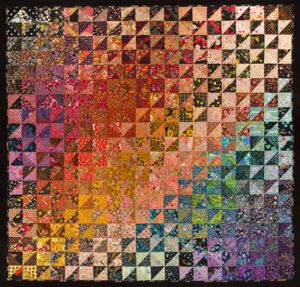
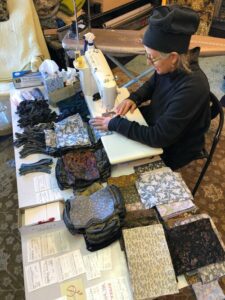
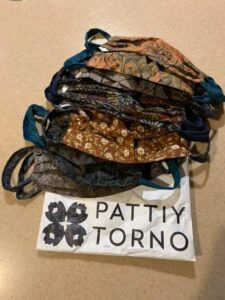
Since 1995 Pattiy Torno’s bed-sized quilts start with hundreds of tiny triangles cut from old clothes and pieces of fabric collected over the past 30 years. She pins the triangles on a 12 foot wall, arranging and rearranging until she is satisfied with the color and pattern movement, then machine-pieces them together and hand quilts them until there is “enough quilting.” She loves having the feeling that, as a quilter, she collaborates with so many people she doesn’t even know: “All those textile designers whose fabrics I play with, all those little girls’, mothers’ and fathers’ dresses, aprons and ties I cut up.” Torno also produces a line of blankets, throws, scarves and hats made from pieced polar fleece in a wide range of colors and unusual patterns. “I always hope that my quilts will be used to keep the human body warm,” she says. “It is one of the true few luxuries in life.”
Pattiy is currently in CURVE studios in Asheville, NC since 2002 where she sells and array of handmade clothing, fleece blankets and hats, and hand-dyed cloth face masks!
Read more about Pattiy Torno at www.pattiytornoart.com
Karen James Swing
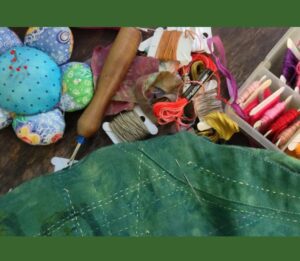
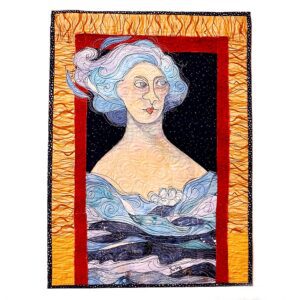
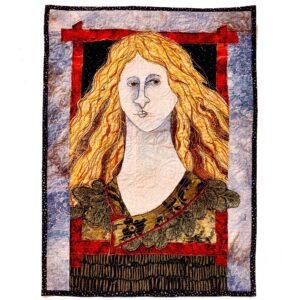
I have loved fibers since I was introduced to macramé when I was 12 years old. Since then I have used weaving, crocheting, knitting, hand embroidery, trapunto, quilting, machine quilting and embroidery, surface design, piecing, and appliqué in my work. I am currently exploring hand-dyed and hand-printed fabrics, machine quilting and embroidery, and other forms of surface design.
Texture and color remain the focus of my work. Thread, as an artist’s medium, provides both color and texture. Layering threads with varying lengths and directions of stitches produces expressive textures. By blending and contrasting threads, colors are intensified and almost take on a life of their own.
As shown in my current body of work, I am pushing the unique sculptural aspects of fibers to also take on the painterly qualities of watercolors and pastels.
Read more about Karen James Swing at www.karenswing.com